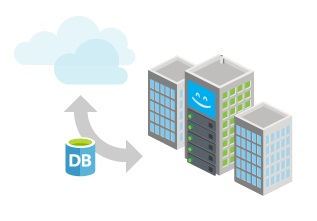Microsoft provides a few more details on its SQL on Linux plans

A couple of weeks after announcing plans to bring SQL Server to Linux, Microsoft is providing a few more specifics about its plans.

On March 7, Microsoft officials said they planned to make a version of the company's SQL Server database generally available on Linux by mid-2017. Microsoft also kicked off a private preview of SQL Server on Linux on March 7. A week later, company officials said roughly 8,000 companies, including about 25 percent of the Fortune 500, had signed up to try the private preview.
In early March, Microsoft execs told me that the "core relational database" features would be coming to Linux, meaning only a subset of the features found in SQL Server 2016. A company spokesperson said officials would not provide a specific list of which features would and would not be part of SQL Server on Linux.
Here'sa few more tidbits, re: what Microsoft will say on that front, via a company blog post:
"We'll first release the core relational database capabilities on Linux targeting mid calendar year 2017 and will work with customers to prioritize the additional capabilities. The core relational database capabilities, inclusive of transaction processing and data warehousing, are the core foundation of building intelligent applications and will enable customers to get started quickly with their deployments."
Officials also said that customers who buy a SQL Server license -- either per-server or per-core -- will be able to use that license on Windows Server or Linux, once SQL Server on Linux is generally available.
Speaking of SQL Server licensing, one Microsoft licensing expert, Paul DeGroot, Principal Consultant with Pica Communications, raised a number of questions about Microsoft's recent offer to provide Oracle users with "free" SQL Server licenses as an incentive to get them to move to SQL Server 2016. DeGroot said there are some time bombs and handcuffs in the Oracle migration offer that make it anything but free.
(I asked Microsoft officials if they disputed DeGroot's analysis, but haven't heard back so far.)
In other database news, Microsoft quietly released Release Candidate 1 of SQL Server 2016, for Windows just a couple of weeks after delivering the first near-final Release Candidate (known as RC0).
In the updated release notes, Microsoft notes that with RC1, "the SQL Server Stretch Database service on Microsoft Azure is now the default data storage service on Azure for Stretch Database" (rather than the Strech Database feature that worked with the Azure SQL Database).
The SQL Server Stretch Database service on Azure "lets you scale SQL Server with up to 1 petabyte of cloud storage to make warm and cold data available to users at low cost," according to the notes.Those interested in testing the new Azure-based Stretch Database service no longer have to sign up to get into the preview. Pricing for the new service is here.
Microsoft officials are declining to say when SQL Server 2016 will be generally available, beyond previous statements that it will be some time in calendar 2016.